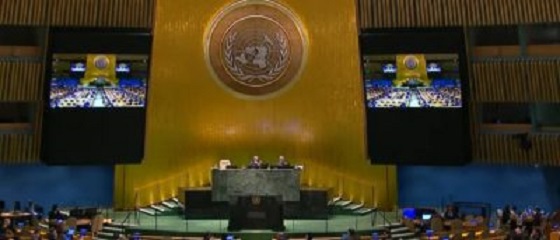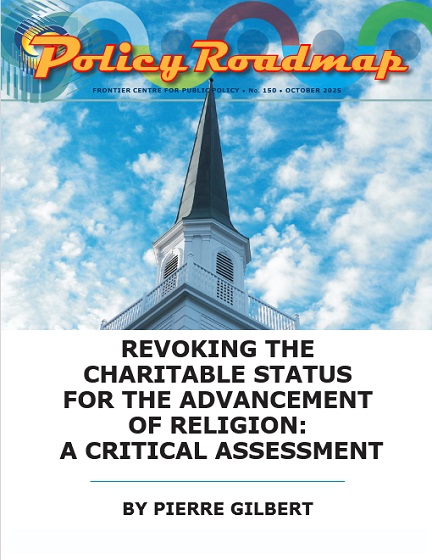C2C Journal
Canada Desperately Needs a Baby Bump

The 21 st century is going to be overshadowed by a crisis that human beings have never faced before. I don’t mean war, pestilence, famine or climate change. Those are perennial troubles. Yes, even climate change, despite the hype, is nothing new as anyone who’s heard of the Roman Warm Period, the Mediaeval Warm Period or the Little Ice Age will know. Climate change and the others are certainly problems, but they aren’t new.
But the crisis that’s coming is new.
The global decline in fertility rates has grown so severe that some demographers now talk about “peak humanity” – a looming maximum from which the world’s population will begin to rapidly decline. Though the doomsayers who preach the dangers of overpopulation may think that’s a good development, it is in fact a grave concern.
In the Canadian context, it is doubly worrisome. Our birth rates have been falling steadily since 1959. It was shortly after that in the 1960s when we began to build a massive welfare state, and we did so despite a shrinking domestically-born population and the prospect of an ever-smaller pool of taxable workers to pay for the expanding social programs.
Immigration came to the rescue, and we became adept at recruiting a surplus population of young, skilled, economically focused migrants seeking their fortune abroad. The many newcomers meant a growing population and with it a larger tax base.
But what would happen if Canada could no longer depend on a steady influx of newcomers? The short answer is that our population would shrink, and our welfare state would come under intolerable strain. The long answer is that Canadian businesses, which have become addicted to abundant, cheap foreign labour through the Temporary Foreign Worker Program, would be obliged to invest in hiring, training and retaining Canadian workers.
Provincial and federal governments would scramble to keep older Canadians in the workforce for longer. And governments would be torn between demands to cut the welfare state or privatize large parts of it while raising taxes to help pay for it.
No matter what, the status quo won’t continue. And – even though Canada is right now taking in record numbers of new immigrants and temporary workers – we are going to discover this soon. The main cause is the “peak humanity” that I mentioned before. Fertility rates are falling rapidly nearly everywhere. In the industrialized West, births have fallen further in some places than in others, but all countries are now below replacement levels
(except Israel, which was at 2.9 in 2020).
Deaths have long been outpacing births in China, Japan and some Western countries like Italy. A recent study in The Lancet expects that by 2100, 97 percent of countries will be shrinking. Only Western and Eastern sub-Saharan Africa will have birth rates above replacement levels, though births will be falling in those regions also.
In a world of sub-replacement fertility, there will still be well-educated, highly skilled people abroad. But there will not be a surplus of them. Some may still be ready and willing to put down roots in Canada, but the number will soon be both small and dwindling. And it seems likely that countries which have produced Canada’s immigrants in recent years will try hard to retain domestic talent as their own populations decline. In contrast, the population of sub-Saharan Africa will be growing for a little longer. But unless education and skills-training change drastically in that region, countries there will not produce the kind of skilled immigrants that Canada has come to rely on.
And so the moment is rapidly approaching when immigration will no longer be able to make up for falling Canadian fertility. Governments will have to confront the problem directly—not years or decades hence, but now.
While many will cite keeping the welfare state solvent as the driving force, in my view this is not the reason to do it. The reason to do it is that it is in Canada’s national interest to make it easier for families to have the number of children that they want. A 2023 study by the think-tank Cardus found that nearly half of Canadian women at the end of their reproductive years had fewer children than they had wanted. This amounted to an average
of 0.5 fewer children per woman – a shortfall that would lift Canada close to replacement level.
The United Nations Population Fund (UNPF) has noticed the same challenge on a global scale. Neither Cardus nor the UNPF prescribes any specific solutions, but their analysis points to the same thing: public policy should focus on identifying and removing barriers families face to having the number of children they want.
Every future government should be vigilant against impediments to family-formation and raising a desired number of children. Making housing more abundant and affordable would surely be a good beginning. Better planning must go into making livable communities (not merely atomized dwellings) with infrastructure favouring families and designed to ease commuting. But more fundamentally, policy-makers will need to ask and answer an uncomfortable question: why did we allow barriers to fertility to arise in the first place?
The original, full-length version of this article was recently published in C2C Journal.
Michael Bonner is a political consultant with Atlas Strategic Advisors, LLC, contributing editor to the Dorchester Review, and author of In Defense of Civilization: How Our Past Can Renew Our Present.
Business
Judges are Remaking Constitutional Law, Not Applying it – and Canadians’ Property Rights are Part of the Collateral Damage
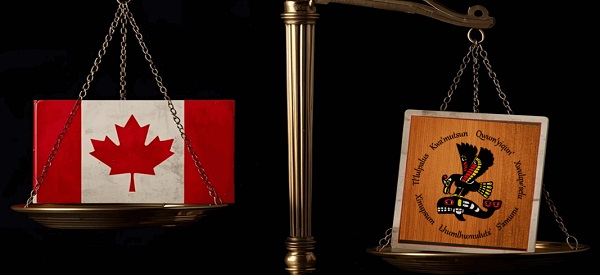
By Peter Best
The worst thing that can happen to a property owner isn’t a flood or a leaky foundation. It’s learning that you don’t own your property – that an Aboriginal band does. This summer’s Cowichan Tribes v. Canada decision presented property owners in Richmond B.C. with exactly that horrible reality, awarding Aboriginal
title to numerous properties, private and governmental, situated within a large portion of Richmond’s Fraser River riverfront area, to Vancouver Island’s
Cowichan Tribes. For more than 150 years, these properties had been owned privately or by the government. The Cowichan Tribes had never permanently lived
there.
But B.C. Supreme Court Justice Barbara Young ruled that because the lands had never been formally surrendered by the Cowichans to the Crown by treaty, (there
were no land-surrender treaties for most of B.C.), the first Crown grants to the first settlers were in effect null and void and thus all subsequent transfers down
the chain of title to the present owners were defective and invalid.
The court ordered negotiations to “reconcile” Cowichan Aboriginal title with the interests of the current owners and governments. The estimated value of the
property and government infrastructure at stake is $100 billion.
This ruling, together with previous Supreme Court of Canada rulings in favour of the concept of Aboriginal title, vapourizes more than 150 years of legitimate
ownership and more broadly, threatens every land title in most of the rest of B.C. and in any other area in Canada not subject to a clear Aboriginal land surrender
treaty.
Behind this decision lies a revolution – one being waged not in the streets but in the courts.
In recent years Canadian judges, inspired and led by the Supreme Court of Canada, have become increasingly activist in favour of Aboriginal rights, in effect
unilaterally amending our constitutional order, without public or legislative input, to invent the “consult and accommodate” obligation, decree Aboriginal title and grant Canadian Aboriginal rights to American Indians. No consideration of the separation of powers doctrine or the national interest has ever been evidenced by
the Court in this regard.
Following the Supreme Court’s lead, Canadian judges have increasingly embraced the rhetoric of Aboriginal activism over restrained, neutral language, thus
sacrificing their need to appear to be impartial at all times.
In the Cowichan case the judge refused to use the constitutional and statutory term “Indian,” calling it harmful, thereby substituting her discretion for that of our
legislatures. She thanked Aboriginal witnesses with the word “Huychq’u”, which she omitted to translate for the benefit of others reading her decision. She didn’t
thank any Crown witnesses.
What seems like courtesy in in fact part of a larger pattern: judges in Aboriginal rights cases appearing to adopt the idiom, symbolism and worldview of the
Aboriginal litigant. From eagle staffs in the courtroom, to required participation in sweat lodge ceremonies, as in the Supreme Court-approved Restoule decision,
Canada’s justice system has drifted from impartial adjudication toward the appearance of ritualized, Aboriginal-cause solidarity.
The pivot began with the Supreme Court’s 1997 Delgamuukw v. British Columbia decision, which first accepted Aboriginal “oral tradition” hearsay evidence. Chief
Justice Lamer candidly asked in effect, “How can Aboriginals otherwise prove their case?” And with that question centuries of evidentiary safeguards intended
to ensure reliability vanished.
In Cowichan Justice Young acknowledged that oral tradition hearsay can be “subjective” and is often “not focused on establishing objective truth”, yet she
based much of her ruling on precisely such “evidence”.
The result: inherently unreliable hearsay elevated to gospel, speculation hardened into Aboriginal title, catastrophe caused to Richmond private and government property owners, the entire land titles systems of Canadian non-treaty areas undermined, and Crown sovereignty, the fount and source of all real property rights generally, further undermined.
Peter Best is a retired lawyer living in Sudbury, Ontario.
The original, full-length version of this article was recently published in C2C Journal.
C2C Journal
Charlie Kirk and the Fragility of Civic Peace
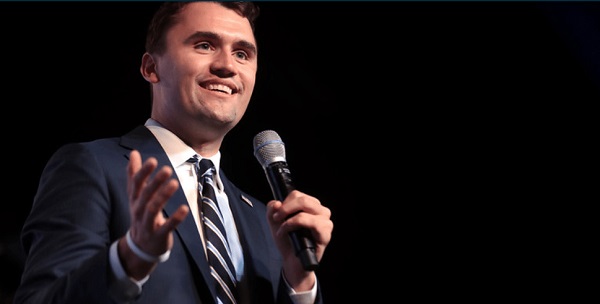
The brutal assassination of Charlie Kirk was shocking not only for its violence but for the chilling aftermath – the revelling on the left, the mendacious reporting, and the calls for more political violence.
Kirk embodied a conversational politics now rare. As founder of Turning Point USA, he brought millions of young people to conservatism by touring campuses and inviting critics – not just supporters – to the microphone. He strode into the lion’s den of higher education, taking hostile questions with civility, good humour, and reasoned argument rather than rancour.
“Disagreement,” he liked to say, “is a healthy part of our systems.”
It wasn’t necessary to share his convictions to recognize his courage and composure.
The reaction to Kirk’s death on September 10 at Utah Valley University was particularly disturbing. News outlets and social media overflowed with callous gloating and demands for further violence. “He got what he deserved” was among the milder responses. A conservative group logged more than 50,000 such comments in four days. Democratic members booed a motion for silence in Congress. A Secret Service agent called Kirk’s death “karma.”
How did it become virtuous to cheer a fellow human being’s death? Part of the answer lies in what literary critic George Steiner called the passing of the tragic vision. In The Death of Tragedy (1961), Steiner argued that tragedy – once the highest expression of human dignity amid suffering – had perished in Western culture, and its loss was civilizational.
The tragic view holds that suffering is an inherent part of the human condition. Chance, flaw, and necessity are woven into our very existence. This recognition distinguishes the tragic sensibility from utopian schemes of collective redemption. Enlightenment rationalism envisioned the world as scientifically perfectible; Marxism reinterpreted conflict as a class struggle culminating in utopia; the managerial state promised that expertise would eliminate disorder.
But when we forget life’s limits, politics ceases to be the art of prudence and compromise and becomes a fever dream of utopia. Once utopia is the aim, violence is reimagined as a form of purification. The French Revolution’s Terror, Stalin’s gulags, Mao’s Cultural Revolution, Pol Pot’s killing fields – each arose from rejecting Kant’s warning: “Out of the crooked timber of humanity, no straight thing was ever built.”
Tragic sensibility is not fatalism. It tempers ambition with humility, recognizing that motives are mixed, victories partial, and knowledge flawed – and that opponents share our frailties. To acknowledge this crookedness is clarity, not despair. Only those who accept tragic limits can build anything lasting.
Politics lacking tragic sensibility becomes a substitute religion, promising salvation through power. Opponents become enemies; compromise becomes betrayal; violence follows. Those convinced of their righteousness feel justified in demonizing others. This tendency is especially apparent on today’s left; its ‘virtuous’ rhetoric of compassion often masks self-righteousness – and self-righteousness without humility can be deadly.
Consider Kirk’s accused assassin, 22-year-old Tyler Robinson. Raised in a stable, conservative family, Robinson drifted leftward and was recently radicalized, seemingly influenced by his transitioning roommate. He referred to himself as a leftist who loathed Trump. One can envision him then, cloaked in righteousness, believing he struck a blow against evil. The opponent becomes not a fellow human being but a symbol of oppression. Murder is no longer malice but moral necessity – the cost of purity. As Robespierre said, “Terror is nothing other than prompt, severe, inflexible justice; it is therefore an emanation of virtue.”
Canadians often imagine themselves immune to such eruptions. Yet our history tells another story: the October Crisis, the Air India bombing… seventy churches burned after unproven residential-school claims, and on-going anti-Jewish protests. Violence disguised as virtue is not alien to our soul.
Canadian academics exhibited hatred comparable to Kirk’s worst American foes. “Shooting is honestly too good for so many of you fascist c—-,” posted University of Toronto professor Ruth Marshall hours after Kirk’s death. Toronto schoolchildren reportedly cheered the news, while teachers watched passively.
This moment is perilously fragile. Social media amplifies outrage, rewarding anger while penalizing restraint. Every disagreement becomes an “existential crisis.” Every opponent is Hitler. The language of “emergency” and “genocide” floods politics, quickening the slide from rhetoric into violence.
The antidote is not repression but the recovery of tragic wisdom: we must temper politics with humility. This requires cultural renewal and virtues that allow citizens to live with differences: prudence, courage, humility, and charity. We need a civic ethos that balances rights with responsibilities, diversity with shared norms. Without restraint, pluralism degenerates into tribalism.
As Solzhenitsyn wrote in The Gulag Archipelago: “the line dividing good and evil cuts through the heart of every human being.” This understanding counters ideologies dividing the world into pure and impure, oppressor and oppressed. The battle is within each heart – and that recognition demands humility.
Kirk’s assassination serves as a grim warning. The decline of civic peace is never accidental; it springs from ideological fanaticism, the conviction that one’s cause is so virtuous that opponents must be demonized and destroyed. Every destructive ideology cloaks itself in righteousness even as it paves the road to cruelty.
Charlie Kirk’s death exposes the danger of politics detached from a tragic sensibility. We must foster a politics tempered with humility, recognizing that our victories are partial and our understanding imperfect. Without this humble wisdom, freedom itself cannot survive.
The original, full-length version of this article was recently published in C2C Journal.
Patrick Keeney is a Canadian writer who divides his time between Kelowna, B.C., and Thailand.
-

 Agriculture1 day ago
Agriculture1 day agoIs the CFIA a Rogue Agency or Just Taking Orders from a Rogue Federal Government?
-

 Business2 days ago
Business2 days agoJudges are Remaking Constitutional Law, Not Applying it – and Canadians’ Property Rights are Part of the Collateral Damage
-

 Red Deer2 days ago
Red Deer2 days agoYour last minute election prep: Common Sense Red Deer talks to the candidates
-
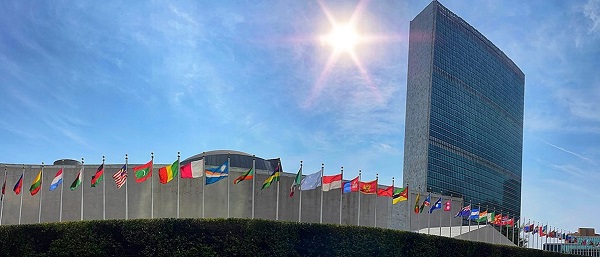
 Business2 days ago
Business2 days agoTrump Admin Blows Up UN ‘Global Green New Scam’ Tax Push, Forcing Pullback
-

 Business2 days ago
Business2 days agoTrump Blocks UN’s Back Door Carbon Tax
-
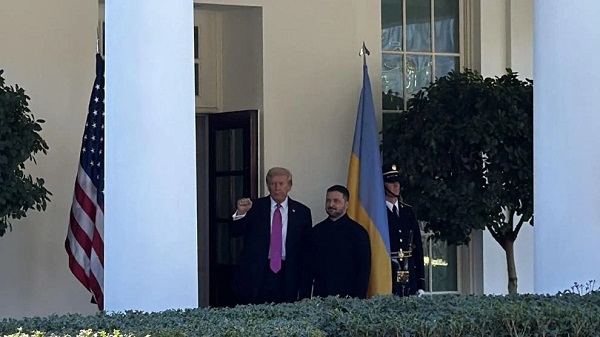
 Daily Caller2 days ago
Daily Caller2 days agoTrump urges Putin, Zelenskyy to make a ‘deal’
-
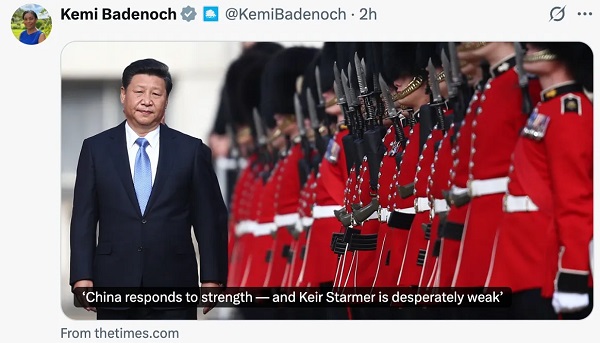
 espionage1 day ago
espionage1 day ago“Suitcase of Cash” and Secret Meeting Deepen Britain’s Beijing Espionage Crisis
-

 Energy6 hours ago
Energy6 hours agoMinus Forty and the Myth of Easy Energy



